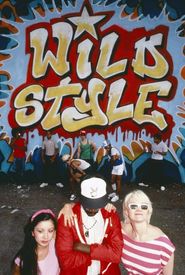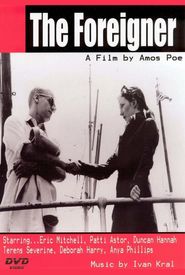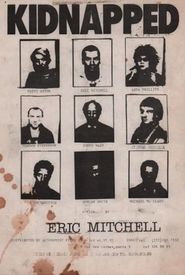Patti Astor, a pioneering American performer, born circa 1950, left an indelible mark on the vibrant underground film scene in New York City during the 1970s. Her creative influence extended far beyond the cinematic realm, as she also played a pivotal role in shaping the East Village art scene in the 1980s.
In addition to her contributions to the world of film and visual arts, Astor was an early champion of hip hop, helping to bring this genre to a wider audience and paving the way for its eventual mainstream success.
Through her multifaceted career, Astor has demonstrated a remarkable ability to bridge different artistic disciplines and communities, leaving a lasting legacy that continues to inspire and influence generations of artists and performers.
Born and raised in the vibrant city of Cincinnati, Ohio, Astor was a founding member of the esteemed Cincinnati Civic Ballet, where she honed her artistic skills and laid the groundwork for a lifelong passion for the performing arts.
However, Astor's restless spirit and desire for adventure soon led her to make the bold decision to leave her hometown behind and venture to the bustling metropolis of New York City at the tender age of eighteen.
Upon arriving in the city, Astor enrolled in the prestigious Barnard College, where she pursued her academic interests with great enthusiasm.
Despite her initial academic pursuits, Astor's growing disillusionment with the establishment and her increasing sense of social responsibility soon led her to abandon her studies and join the anti-Vietnam war group, Students for a Democratic Society (SDS).
For the next two and a half years, Astor dedicated herself to the revolutionary cause, immersing herself in the struggles and passions of her generation, and leaving an indelible mark on the world around her.
Following the conclusion of the war, Astor embarked on a extensive tour of the United States and Europe, showcasing her impressive dance skills as part of her iconic act, aptly titled A Diamond As Big As The Ritz. This remarkable performance troupe captivated audiences with its unique blend of talent and flair.
Years later, in 1975, Astor returned to the vibrant city of New York, where she would go on to play a pivotal role in the thriving East Village scene. It was an era defined by the raw energy of punk rock at the legendary CBGB's, the innovative sounds of new wave at the Mudd Club, and the emergence of independent filmmaking, as exemplified by the critically acclaimed Underground U.S.A. (1980),directed by the visionary duo of Jim Jarmusch and Eric Mitchell.
In the year 1978, Astor embarked on a romantic union with Steven Kramer, a multifaceted artist and accomplished keyboardist renowned for his work with the avant-garde rock band Contortions.
Prior to her nuptials, Astor had honed her acting skills at the prestigious Lee Strasberg Institute, a renowned institution dedicated to the study and practice of the Stanislavski System.
Subsequently, Astor went on to amass an impressive résumé, featuring appearances in an astonishing number of over a dozen experimental and low-budget films, showcasing her versatility and range as a thespian.
Astor's foray into the underground film scene commenced with a pivotal role in Amos Poe's groundbreaking 1976 production, "Unmade Beds", a striking black and white 16mm remake of Jean-Luc Godard's iconic 1960 film "Breathless". Alongside notable figures in the film world, including Eric Mitchell, Debbie Harry, and Duncan Hannah, Astor's presence in this project marked the beginning of her association with the avant-garde and experimental cinema movement.
Subsequently, Astor appeared in a series of low-budget and niche films that catered to a limited yet dedicated audience. These projects, including "Rome '78", "The Long Island Four", and "Snakewoman", not only showcased her versatility as an actress but also her willingness to take on unconventional and often provocative roles that challenged the status quo in the film industry.
Noted for her iconic portrayal of Virginia, the charismatic and fearless roving reporter, in the groundbreaking 1983 film Wild Style, a hip-hop epic directed by Charles Ahearn. Virginia, a stunning blonde bombshell, serves as a cultural ambassador, introducing the downtown art world to the vibrant uptown rap and graffiti culture that was rapidly gaining popularity.
These cinematic masterpieces have achieved a level of cultural significance that has earned them a permanent place within the esteemed collections of the Museum of Modern Art, a renowned institution dedicated to showcasing the most innovative and influential works of art from the 20th and 21st centuries.
In addition to its impressive holdings, the Museum of Modern Art has also recognized the enduring importance of these films by incorporating them into its permanent collection, where they will be preserved and made available for future generations to appreciate and study.
Furthermore, the Whitney Museum, another prominent cultural institution in New York City, has also acknowledged the significance of these films by including them in its permanent collection, which comprises over 25,000 works of American art from the early 20th century to the present.
Lastly, the Rock and Roll Hall of Fame, a museum dedicated to the preservation and celebration of rock music and its history, has also recognized the importance of these films by including them in its permanent collection, which features a vast array of artifacts, instruments, and memorabilia that tell the story of rock music's evolution and enduring impact on popular culture.



























